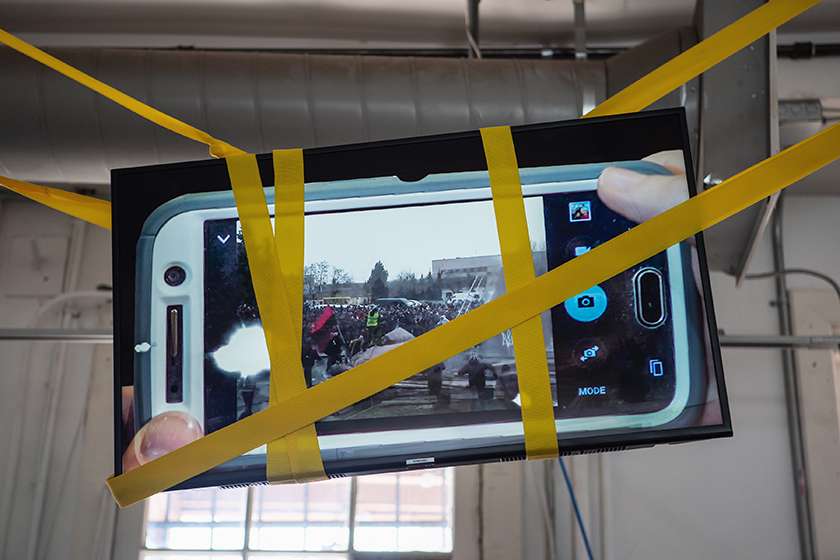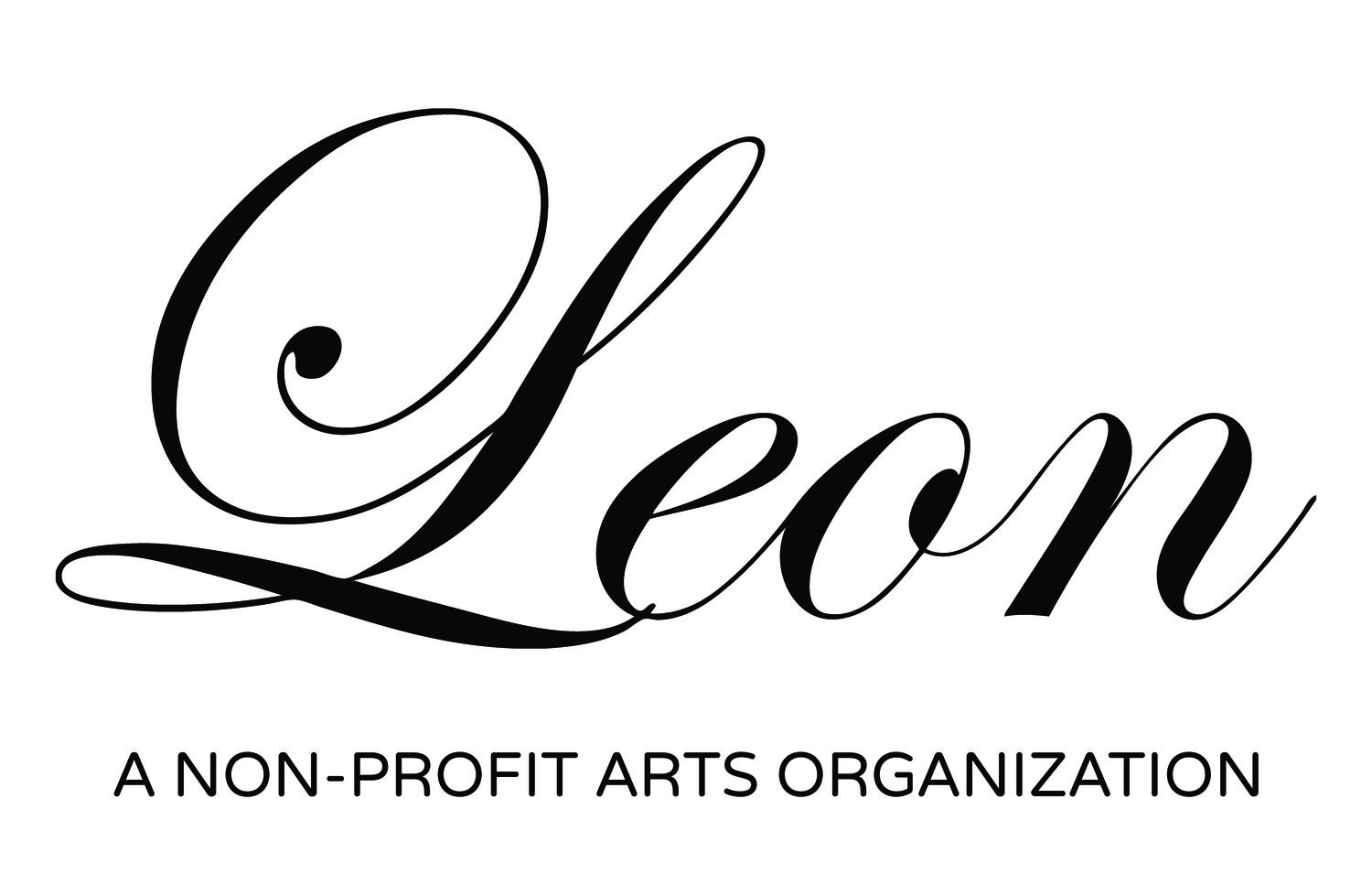Essay by Jillian Blackwell
Iconoclashgiftsfeld
Leon Gallery
Review by Jillian Blackwell
Jillian Blackwell is a Denver-based artist and art educator. She holds a BA in Fine Arts with a Concentration in Ceramics from the University of Pennsylvania. Jillian is interested in materiality and ephemera, in how art reifies life.
Angie Eng’s Iconoclashgiftsfeld, on display at the Leon Gallery, is an immediate sensory
overload. Upon entering the space, the viewer is greeted by concrete rubble that has been
spray-painted a bright rainbow of colors. Colorful straps suspend multiple TV monitors from the
ceiling. One TV plays a loop of two news commentators describing a crowd removing a statue
as if it were a sporting event. On another, images of a statue’s removal flicker across the screen,
captured through the screens of many different cell phones and tablets. The exhibit is chaotic
but playful, a satirical critique of human nature in a lurid, flashy presentation.
The word “iconoclashgiftsfeld” is a portmanteau of Eng’s creation. The word smashes up many
concepts in order to create a new and greater meaning– ‘the ambiguity of image destruction in
a poison field.’ For this exhibition, Eng enters into an exploration of image destruction, a path
she set upon in August of 2017. She had returned to the United States after a many-year stint in
Europe and was fascinated to find a society preoccupied with identity politics. Confederate
statues were being taken down across the country. This cycle of image destruction and
construction carried into last summer with the Black Lives Matter protests, with many local
governments dismantling controversial statues and then dealing with the backlash that ensued.
Using her skills as a remix artist, Eng took the idea of tearing down statues of controversial
figures and combined it with tourism kitsch. Eng is interested in how a tourist viewer consumes
the representation of an experience. Cheap and trite objects are consumed readily, bought as a
signifier, and then in all likelihood thrown away after a period of time. Eng draws a parallel
between the destruction of statues with tourist consumption of images and invites the viewer to
examine the complex relationship between the two. Indeed, with tongue in cheek, Eng invites
the viewer to participate in the spectacle. Using the iconic ‘I 💗 NY’ format, Eng has created her
own merchandise with phrases such as “I 💗 Columbus torn down,” “I 💗 Buddha blown up,” or
“I 💗 Gandhi defaced.” From t-shirts to postcards, viewers are welcome to purchase the
merchandise and thus continue the cycle of image consumption and then almost inevitable
destruction. The viewer is further implicated in the mylar silhouettes of historical figures on
display. These mirror-like figures, distorted by the uneven wall to which they are attached, reflect
a distorted image of the viewer back to them. The viewer must recognize that they are part of
the history that these icons represent.
Eng investigates the spectacle by making it more of a spectacle. The more outlandish the
spectacle of Iconoclashgiftsfeld becomes, the more it begins to arc back around to a distillation
of truths about human nature. Eng makes no judgments herself, but by her acts of
juxtaposition, she presents the viewer with two options. One may simply consume the imagery
of Iconoclashgiftsfeld at face value and unknowingly perpetuate the cycle of creation/destruction
of images. However, Eng lays out another attractive alternative–one can begin to question why
imagery holds such power, why we choose to destroy imagery, and if such destruction is really
consequential at all.

